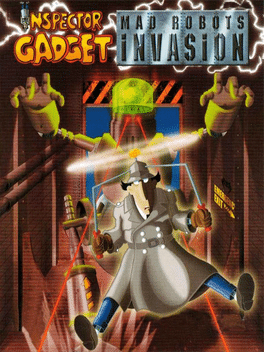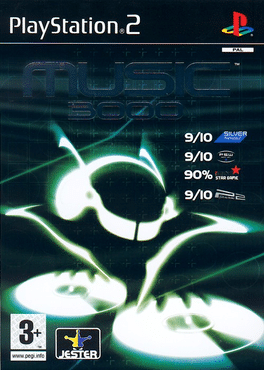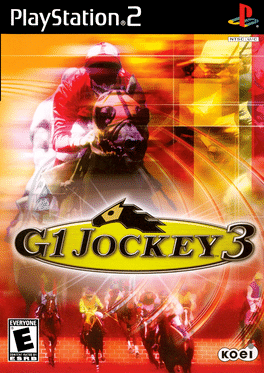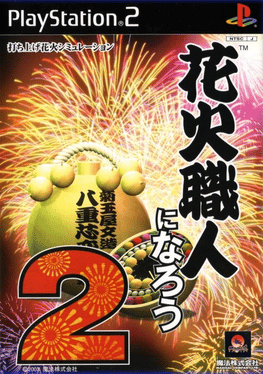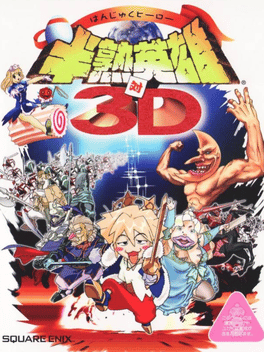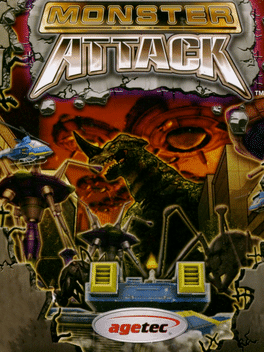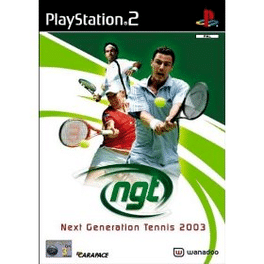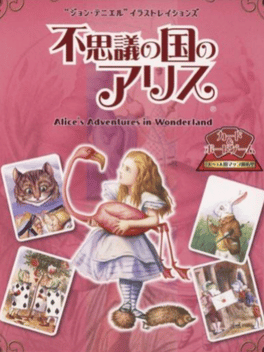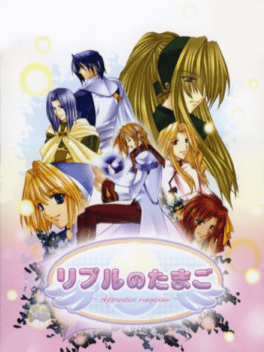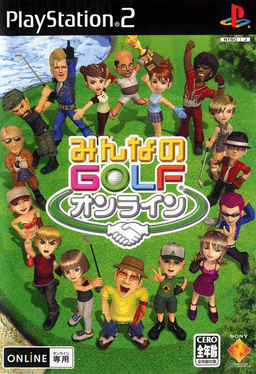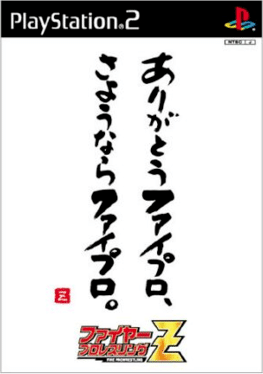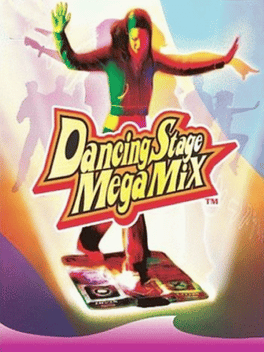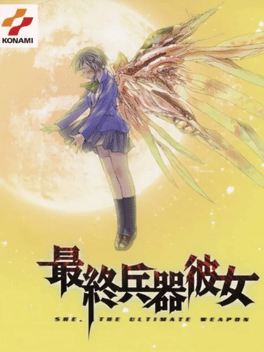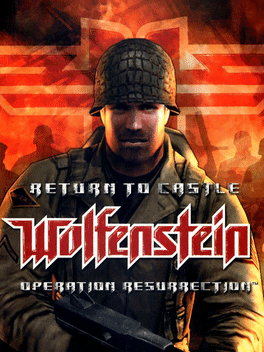New Playstation 2 Games - Page 71
-
Inspector Gadget: MAD Robots Invasion
2003
Dr. Claw continues his quest for world domination. He dreams of a world completely ruled by his super-powerful robots that are indestructible and fitted with highly advanced artificial intelligence!. To carry on his plan without interference, Dr. Claw has to first kidnap Penny and Brain to diver the attentions of Inspector Gadget. Now it is up to you! Become Inspector Gadget, free your friends and save the world from Dr. Claws evil clutches. -
Perfect Ace: Pro Tournament Tennis
2003
Perfect Ace: Pro Tournament Tennis is a Sports game, developed by Aqua Pacific and published by Oxygen Interactive, which was released in Europe in 2003. -
Music 3000
2003
Music 3000
2003
MUSIC allows you to record vocals or other sounds to incorporate into your songs. Vocals can now be transformed into instruments, adding a new layer of creativity to the critically acclaimed music creation software. This US-version of the UK music phenomenon was not released under this title; instead, the game acquired a license and was released with a few changes as Funkmaster Flex's Digital Hitz Factory. -
G1 Jockey 3
2003
G1 Jockey 3
2003
star 6.2Fancy hats, oval turf tracks and people waving tiny bits of paper on the stands. Welcome to the world of horse racing. While most other racing games have the player controlling a motorized vehicle (such as a car or a powerboat), or using physics to move closer to the goal (skiing, sailing and so on), in G1 Jockey the player is controlling an animal, which makes it slightly different from other racing games in the market. The player has to balance four things - the overall speed of the horse, the stamina, horse motivation, and the potential, which affects for how long the horse can keep the speed high after all stamina was lost - crucial for the last stretch sprint. It's impossible to raise all four at once, so players must have a well defined strategy to succeed. Depending on their abilities, each horse might be better suited for a particular strategy or type of race, and each must be treated differently to achieve the best possible result. The game features a large roster of horses, and many tracks to choose -
Hanabi Shokunin ni Narou 2
2003
Fireworks are a class of explosive pyrotechnic devices used for aesthetic, cultural, and religious purposes. A fireworks event (also called a fireworks show or pyrotechnics) is a display of the effects produced by firework devices. Fireworks competitions are also regularly held at a number of places. Fireworks take many forms to produce the four primary effects: noise, light, smoke and floating materials (confetti for example.) They may be designed to burn with flames and sparks of many colors, typically red, orange, yellow, green, blue, purple, , silver and gold. Displays are common throughout the world and are the focal point of many cultural and religious celebrations. During the summer in Japan, fireworks festivals are held nearly every day someplace in the country, in total numbering more than 200 during August. The festivals consist of large fireworks shows, the largest of which use between 100,000 and 120,000 rounds (PL Art of Fireworks), and can attract more than 800,000 spectators. Street vendors set up s -
Kino no Tabi: The Beautiful World
2003
A visual novel based on the first six light novels volumes of the same name. -
Tank Elite
2003
Tank Elite
2003
Take the role of a commander by operating one of thirteen armored tanks spanning from WWII to the modern day and Use a variety of strategies to defeat your adversary in thirteen deadly missions. -
Hanjuku Hero Tai 3D
2003
-
Monster Attack
2003
Monster Attack
2003
Monster Attack is a third-person action shooter and the first game in the Chikyuu Boueigun / Earth Defense Force series. The player takes the role of an EDF (Earth Defence Force) infantry man to single handily battle hordes of giant bugs, robots and alien ships that have invaded Earth, across 30 missions. The game eludes to other EDF forces, but they are never seen. You choose two weapons for each mission from dozens of various missile launchers, machine guns, flamethrowers and more unique weapons, some, faster, more powerful or better suited to the mission at hand than others, are given infinite ammo (though the weapons must still be reloaded after each clip is used up) and are set loose in one of several (usually city-based) fully destructible environments. Players can also mount a vehicles such as an air bike, a tank and a helicopter. The player recovers and increases his maximum health and armour, and unlocks new weapons by picking up power-ups from defeated enemies that spawn in and come at the player by the -
Viorate no Atelier: Gramnad no Renkinjutsushi 2
2003
The fifth game in the Atelier franchise and the second of the two Gramnad games. This story takes place 20 years after the first game. Both games were re-released on the PlayStation Portable with additional content and endings. The games have never been released outside of Japan. -
Next Generation Tennis 2003
2003
The 2003 version of NGT includes many new innovations: detailed animations, enhanced controls, super realistic trackside details like ball boys and show-time match presentations. Experience points to improve your player's skills, bonus courts and players to unlock. The official courts of Roland Garros (French Open) and the US OPEN as well as both licensed male and female tennis stars. -
Ripple no Tamago: Apprentice Magician
2003
The Oujisama to Romance - Ripple no Tamago: Step into the persona of an up 'n coming sorceress named Crim who has been tasked with conjuring a cure to reawaken a sleeping prince who has been cursed with a spell. Along the way, interact and contact with fellow mages. -
Minna no Golf Online
2003
Minna no Golf Online
2003
An online based title in the Everybody's Golf series, released only in Japan for PS2. Its server were shut down in 2005. -
Fire Pro Wrestling Z
2003
Fire Pro Wrestling Z
2003
Fire Pro Wrestling Z released for the PS2 in 2003 was supposed to be the final chapter in the long-running Fire Pro series. -
Dancing Stage MegaMix
2003
Dancing Stage MegaMix is the fifth home release in the Dancing Stage series, a European version of the Dance Dance Revolution series of music video games. MegaMix was the first Dancing Stage game released on the Sony PlayStation 2 game console. Based largely on Dancing Stage EuroMix 2, MegaMiX was separated from the arcade game by a completely different track list of songs. The game was marketed by Konami as a family game and an exercise tool in an effort to make the niche series more mainstream. -
Simple 2000 Series Vol. 29: The Renai Board Game Seishun 18 Radio
2003
The Renai Board Game Seishun 18 Radio: Youth 18 Radio is a board game that also incorporates slight adventure aspects and high-production anime movies with the completion of each scenario. -
Saishuu Heiki Kanojo
2003
Saishuu Heiki Kanojo
2003
A multi-story, multi-ending love adventure game based on Shin Takahashi's original manga. The player becomes the main character, Shuji, and experiences the last love on earth with the ultimate weapon, Chise. The purpose of the game is to keep Chise in a happy state and continue to fall in love with her until the last day on earth. Depending on the player's choices and actions, "Chise"'s "happiness value" changes, and "Chise" becomes an existence more than "she" or more than "weapon". -
Basketball Xciting
2003
-
Return to Castle Wolfenstein: Operation Resurrection
2003
Operation Resurrection is the PlayStation 2 version of the Return to Castle Wolfenstein with some added extras that make it it's own unique game. Next to the full, original singleplayer campaign, there are 7 new prologue levels that show how B.J. and Agent One first met and how they got captured and imprisoned at Wolfenstein Castle. There is also a secret bonus awarded at the end of every level when every secret area has been found. Unlike Return to Castle Wolfenstein: Tides of War there is no multiplayer support - internet and multi link.
